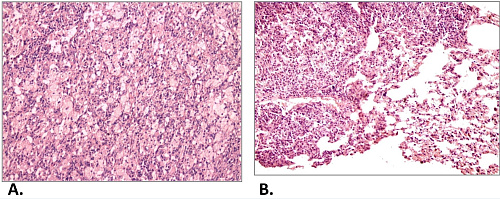An exciton is a quasiparticle, an auxiliary object of quantum theory, that describes the behaviour of a bound state of a pair of carriers of opposite charges - an electron and a hole. The concept of the exciton, as explained by MEPhI scientists, allows us to describe with high precision, for example, the electrical properties of organic semiconductors during interaction with light.
The birth or annihilation of an exciton - that is, the resonant energy exchange in an organic semiconductor - is accompanied by the absorption or emission of a photon (an electromagnetic radiation quantum) correspondingly, the scientists say. A new paper by the research team demonstrates the possibility of controlling the properties of exciton transitions using the “strong coupling” effect.
“The ‘strong coupling’ effect involves the formation of a hybrid state of energy between excitation in the matter, which is described using the exciton concept, and localised electromagnetic excitation. To create such conditions, special resonators are used, which are based on a pair of mirrors placed opposite each other at a distance of approximately the wavelength of light”, said Professor Igor Nabiev, the leading scientist of the Laboratory of Nano-Bioengineering of the National Research Nuclear University MEPhI, Russia, and professor at the University of Reims Champagne-Ardenne, France.
Zero-Loss Energy Transfer
One of the practically interesting effects in organic semiconductors, which uses the term exciton to describe them, is Förster resonance energy transfer (FRET), used in medical applications. It involves lossless energy transfer between two excitonic states in different molecules at small distances from each other.
Under standard conditions, the transfer takes place in a certain direction, from the donor molecule to the acceptor molecule. To use the potential of this phenomenon in photovoltaics more widely, it was necessary to experimentally capture and study the so-called “carnival effect”, a controlled reversal of energy transfer directions in FRET between excitons of different molecules.It was
theoretically predicted about three years ago by physicists in the US. But scientists at the Laboratory of Nano-Bioengineering of the National Research Nuclear University MEPhI were the first in the world who managed to demonstrate it.
Multiple Efficiency Gains
According to the authors, the immediate practical result of the work is the possibility to dramatically increase the efficiency of photovoltaic devices that convert light energy into electrical energy. This is achievable by harvesting energy from those excitonic states that have traditionally proved to be channels of energy loss, the scientists said.
“The newly discovered possibility of harvesting energy from long-lived states through the formation of exciton-photon hybrid states will multiply the efficiency of electroluminescent and photovoltaic devices”, explained Dmitry Dovzhenko, a researcher at the Laboratory of Nano-Bioengineering at the National Research Nuclear University MEPhI, Russia, and researcher at the University of Southampton, UK.
The authors of the study used a previously developed microresonator (
http://lnbe.mephi.ru/ru/news/861) to create a strong coupling between excitons in a pair of organic fluorophores and the light localised in the resonator. According to the MEPhI scientists, a number of energy transfer parameters between donor and acceptor can be artificially controlled in this system, up to and including changing the direction of the transfer.
Controlling With Light
The system created at NRNU MEPhI can be used for precise remote control of chemical reactions as well as in the development of optically controlled imaging technologies in medical diagnostics and other areas, the scientists explained.
“Beyond increasing the efficiency of FRET, which is widely used in biomedical diagnostics, the carnival effect can be used to control other physical and chemical processes - for example, to multiply the efficiency of external resonator-controlled energy transfer or singlet fission of excitons”, Igor Nabiev said.
The research paper was
published in the Chemical Science journal. The study was carried out with the participation of specialists from the Moscow Institute of Physics and Technology, I.M. Sechenov First Moscow State Medical University, the Shemyakin and Ovchinnikov Institute of Bioorganic Chemistry, University of Southampton (UK), University of Reims Champagne-Ardenne (France), Donostia International Physics Centre (Spain), and the Basque Foundation for Science (Spain). The research was supported by the Russian Science Foundation,
Grant No. 21-79-30048.









